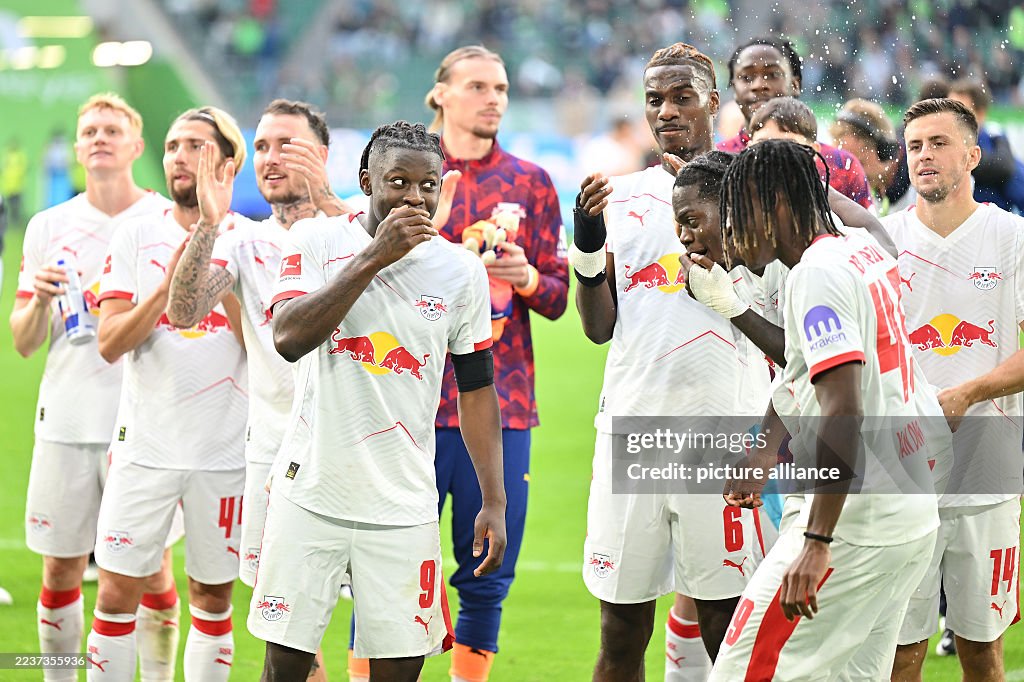Jamie Carragher is not at all impressed with Liverpool’s performances so far. The Reds icon does not yet see a top team in Arne Slot’s side and points among other things to Florian Wirtz, who was brought to Anfield with high expectations.
 Embed from Getty Images
Embed from Getty Images
The 1–0 defeat at Galatasaray has amplified scrutiny on Liverpool’s early-season trajectory under Arne Slot, and Jamie Carragher’s assessment on CBS Sports captured a growing unease among supporters.
Carragher argued that Liverpool do not currently resemble a top team. In his view, the team’s possession resembles end-to-end basketball more than controlled, elite-level football, with the ball shuttling from flank to flank without the structure, tempo control, and compactness expected from sides that dominate Europe. His core contention is about identity and balance: Liverpool have added high-profile talent, but the pieces have not yet been assembled into a coherent whole.
Carragher’s remarks place special focus on how the summer’s headline arrivals are being integrated. Florian Wirtz, signed with immense expectations after starring as a creative hub, has become a lightning rod in this conversation. Carragher says Wirtz is not truly involved, implying that Liverpool’s spacing and roles do not naturally funnel possession through their new playmaker in the right zones. The broader implication is that Liverpool’s structure does not provide the clear reference points and passing lanes that allow creative midfielders to receive on the half-turn between the lines. If Wirtz is drifting wide to find the ball or dropping too deep to connect play, it suggests the team lacks vertical layering: the kind of staggered positioning that creates clean progressions from build-up to chance creation.
Jeremie Frimpong and Alexander Isak are also name-checked as examples of stardust scattered onto a hard-working core. Frimpong’s profile thrives on aggressive overlaps, third-man combinations, and quick switches that isolate the far-side full-back. Without synchronized midfield movements and a reliable rest-defense behind the ball, those forward forays can either fizzle out or leave transition vulnerabilities. Isak, meanwhile, is an apex forward who excels when the team can compress the pitch around the box and feed him with measured cutbacks or incisive through-balls. If Liverpool’s attacking is stretched into a touchline-to-touchline ping rather than a compact suffocation of the opponent’s box, strikers like Isak risk being starved of high-probability service.
The consistent theme in Carragher’s critique is balance. Balance in modern elite football is not a vague aesthetic preference; it is a product of spacing, role clarity, and pressing-lane choreography. In possession, it is about having the right number of players between the lines, around the ball, and securing rest-defense with defenders and midfielders positioned to kill counters. Out of possession, it is about compact distances and triggers that move the team as one. A side can feature excellent athletes and gifted technicians yet still look like a collection of parts if those principles are not harmonized.
Slot’s challenge can be framed in three practical questions. First, where does progression start, and who owns the first pass that breaks pressure. If the center-backs and deepest midfielder are not consistently creating an overload against the first line of the press, the ball will be forced wide, inviting the very pendulum swings Carragher alludes to. Second, how are zones 14 and the half-spaces populated. With a creator like Wirtz, the team needs repeatable patterns that deliver him touches between the opponent’s midfield and defensive lines, ideally facing forward. Third, what is the plan for rest-defense. The higher the full-backs push and the more numbers committed to the final third, the clearer the instructions must be for the holding midfielder and the ball-far center-back to manage immediate turnovers.
There is also the human rhythm of a new cycle to consider. Liverpool are reshaping themselves after a lengthy era with a distinct identity. Shifts in training methodologies, pressing cues, and build-up schemes can take weeks or months to bed in. Players accustomed to one set of habits need repetitions to internalize new automatisms. That does not invalidate Carragher’s concerns; it contextualizes them. A top club does not enjoy the luxury of slow learning in public. The fixture list is unforgiving, and early defeats harden narratives.
From a tactical lens, several adjustments could address the concerns raised. Liverpool could tilt the midfield triangle to secure more controlled central access, allowing Wirtz to receive earlier and more often in pockets where he can turn. They might also introduce a lopsided full-back strategy, pushing one full-back high to pin the last line while keeping the opposite full-back closer to the holding midfielder, fortifying rest-defense and enabling cleaner circulation. Staggered positioning between the two advanced midfielders can prevent them from occupying the same vertical lane, which often leads to the aimless side-to-side patterns that Carragher criticized. In pressing, slightly dropping the starting line of engagement can compress space and shorten the team, increasing ball recoveries in the middle third instead of stretching into a helter-skelter tempo.
The integration of Frimpong and Isak can benefit from micro-patterns designed to their strengths. For Frimpong, pre-set rotations with the right-sided midfielder can open inside channels, while a deeper right center-back can form a back three in possession to guard against counters. For Isak, Liverpool will need more cutback platforms and controlled box entries rather than early crosses or speculative diagonals. Those are not wholesale philosophical changes; they are nudges that align personnel with the underlying blueprint.
Beyond tactics, there is the question of leadership and on-pitch communication. Sides that look disjointed often lack clear voices dictating tempo. This can be solved by designating responsibility: who slows the game down after winning it back, who demands the extra pass to draw out a presser before breaking a line, who resets the shape when chaos threatens to take over. These cues are as crucial as any chalkboard scheme.
Carragher’s comments will resonate because they reflect familiar anxieties for any elite club in transition: big signings must feel additive, not decorative; the game model must turn individual qualities into collective advantage; and every performance must feed the long-term identity rather than borrowing random solutions week to week. The loss in Istanbul, then, becomes more than a single scoreline. It becomes a stress test of how quickly Slot can embed clarity without sacrificing ambition.
There is, however, a potential positive spin. Early turbulence can accelerate learning. A tightly contested defeat away from home can expose the exact cracks that need sealing, giving the staff hard evidence for adjustments. If Liverpool respond by refining their spacing, clarifying roles for Wirtz, and calibrating the risk-reward dial for Frimpong’s forward runs, the narrative can pivot quickly. Results often follow once a team’s possession has a purpose beyond territory and their pressing becomes a springboard rather than a scramble.
For now, the verdict from one of the club’s most outspoken former players is blunt: too much noise, not enough structure. Whether that becomes a turning point or a warning unheeded will depend on Slot’s capacity to marry star power with system discipline and to transform scattered stardust into a constellation.
Updated: 03:50, 1 Oct 2025







